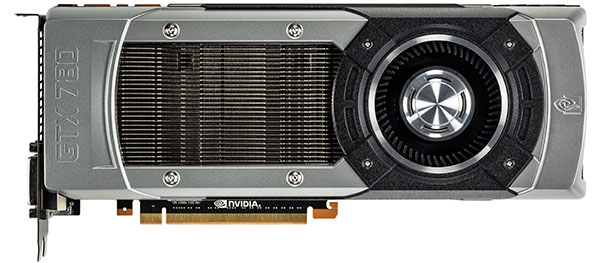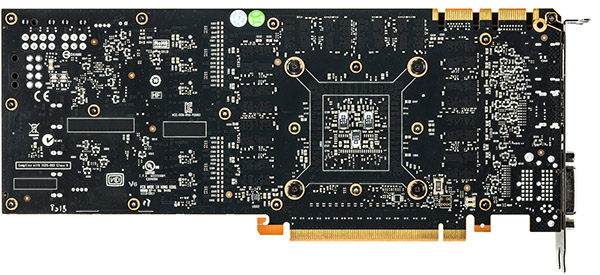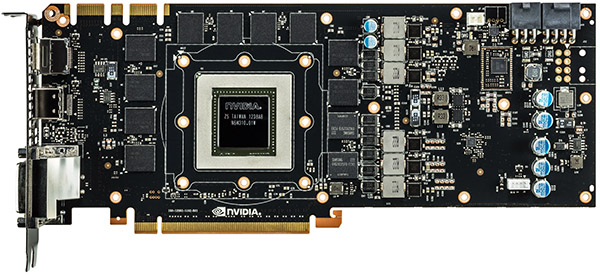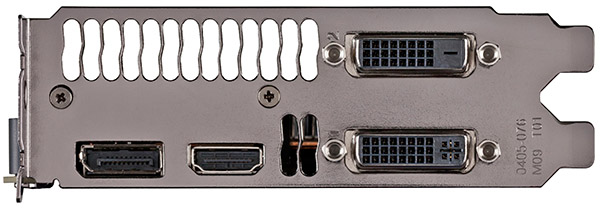Nvidia GeForce GTX 780 Review: Titan’s Baby Brother Is Born
At $1,000, GeForce GTX Titan only made sense for folks building small form factor PCs and multi-GPU powerhouses. Now there's another option with every bit of panache, a slightly de-tuned GPU, and a price tag $350 lower: meet Nvidia's GeForce GTX 780.
GeForce GTX 780: The Card
I continue to be impressed by Nvidia’s industrial design. Sexy isn’t a word I typically ascribe to a piece of PC hardware, but it’s hard not to admire the GeForce GTX 690, Titan, and now the 780. Aesthetically, GeForce GTX 780 is almost identical to Titan, aside from the GTX 780 etched in the front of the card’s shroud. Consequently, everything I said about Titan in my February launch coverage applies here, too.
We’re looking at another 10.5”-long board, which, again, is half of an inch shorter than AMD’s Radeon HD 7970. And whereas the Tahiti-powered competition employs a cheaper-feeling plastic cover, GTX 780 sports a familiar aluminum shell surrounding a polycarbonate window that peers into the card’s heat sink. Unfortunately, the magnesium alloy fan housing we were treated to on GeForce GTX 690 is gone, just as it was with Titan.
Similar also is the centrifugal fan that effectively exhausts heated air from the 780’s rear I/O panel. This is a particularly big deal in multi-card configurations, since you don’t want waste heat getting recirculated back into your case, sabotaging your CPU overclock.
One thing Nvidia says it does improve on GeForce GTX 780 compared to Titan, however, is fan control. The company boasts that it developed a controller with an adaptive temperature filter and a thermally-targeted software algorithm that more intelligently maintains consistent fan speeds. On paper, the change is quite small—100-RPM fluctuations are tightened up to a roughly 20-RPM range. But that’s enough, purportedly, to bring noise down a few decibels compared to the GeForce GTX 680.
Oddly, no acoustic comparisons are drawn to Titan, which we assume means that noise is comparable between the two cards. This makes sense, given similar GPUs and industrial designs. Moreover, the GeForce GTX 780 and Titan share a 250 W TDP. So it’s hardly a surprise that they both have eight- and six-pin auxiliary power connectors, too.
Display connectivity also gets replicated from the GeForce GTX Titan to the 780. Two dual-link DVI outputs, HDMI, and DisplayPort enable as many as four simultaneous screens. You can use three in Surround and a fourth as a Windows desktop screen, just sort of hanging out. By far, triple-screen arrays are the most attractive with a card like this, though.
Nvidia says that the GeForce GTX 780 will completely replace the GeForce GTX 680 in its line-up and sell for $650. That’s an almost $200 premium for 780’s additional performance in games and a bit of acoustic dampening. Meanwhile, Radeon HD 7970 GHz Edition cards are selling for $450 and significantly outpacing the old GK104-based 680. Without a solution back down in the GeForce GTX 680’s price range, AMD is going to eat that space up (particularly with non-GHz Edition cards going for $400). It’s a pretty poorly-kept secret that more GeForce GTX 700-series cards are on their way, and those should help. The question for today is: does GeForce GTX 780’s speed warrant that greater-than 40% increase in price?
Get Tom's Hardware's best news and in-depth reviews, straight to your inbox.
Current page: GeForce GTX 780: The Card
Prev Page GK110 Gets A Little Bit Leaner Next Page GeForce Experience And ShadowPlay-
CrisisCauser A good alternative to the Titan. $650 was the original GTX 280 price before AMD came knocking with the Radeon 4870. I wonder if AMD has another surprise in store.Reply -
It's definitely a more reasonable priced alternative to the titan, but it's still lacking in compute. Which might disappoint some but I don't think it'll bother most people. Definitely not bad bang for buck at that price range considering how performance scales with higher priced products, but it could've been better, $550-$600 seems like a more reasonable price for this.Reply
-
hero1 This is what I have been waiting for. Nice review and I like the multi gpu tests. Thanks. Time to search the stores. Woohoo!!Reply -
natoco To much wasted silicon (just a failed high spec chip made last year, even the titan) and rebadged with all the failed sections turned off. I wanted to upgrade my gtx480 for a 780 but for the die size, the performance is to low unfortunately. It has certainly not hit the trifecta like the 680 did. Would you buy a V8 with 2 cylinders turned off even if it were cheaper? No, because it would not be as smooth as it was engineered to be, so using that analogy, No deal. customer lost till next year when they release a chip to the public that's all switched on, will never go down the turned off parts in chip route again.Reply -
EzioAs In my opinion, this card and the Titan is actually a clever product release by Nvidia. Much like the GTX 680 and GTX 670, the Titan was released at higher price (like the GTX 680) while the slightly slower GTX 780 (the GTX670 for the GTX600 series case) is at a significantly lower price but performing quite close to it's higher-end brother. We all remember when the GTX 670 launched it makes the GTX680 looks bad because the GTX 670 was 80% of the price while maintaining around 90-95% of the performance.Reply
Of course, one could argue that as we get closer to higher-end products, the performance increase is always minimal and price to performance ratio starts to increase, however, for the past 3-4 years (or so I guess), never has it been that the 2nd highest-end GPU having such low performance difference with the highest-end GPU. It's usually significant enough that the highest end GPU (GTX x80) still has it's place.
Tl;dr,
The GTX Titan was released to make the GTX 780 look incredibly good, and people (especially on the internet), will spread the news fast enough claiming the $650 release price for the GTX 780 is good and reasonable, and people who didn't even bother reading reviews and benchmarks, will take their word and pay the premium for GTX 780.
Nvidia is taking a different route to compete with AMD or one could say that they're not even trying to compete with AMD in terms of price/performance (at least for the high-end products). -
mouse24 natocoTo much wasted silicon (just a failed high spec chip made last year, even the titan) and rebadged with all the failed sections turned off. I wanted to upgrade my gtx480 for a 780 but for the die size, the performance is to low unfortunately. It has certainly not hit the trifecta like the 680 did. Would you buy a V8 with 2 cylinders turned off even if it were cheaper? No, because it would not be as smooth as it was engineered to be, so using that analogy, No deal. customer lost till next year when they release a chip to the public that's all switched on, will never go down the turned off parts in chip route again.Reply
Thats apretty bad analogy. A gpu is still smooth even with some of the cores/vram/etc turned off, it doesn't increase latency/frametimes/etc. -
godfather666 "But, I’m going to wait a week before deciding what I’d spend my money on in the high-end graphics market. "Reply
I must've missed something. Why wait a week? -
JamesSneed Natoco, your comment was so clueless. It is likely every single CPU or GPU you have ever purchased has fused off parts. Even the $1000 extreme Intel cpu has a little bit fused off since its a 6 core CPU but using a 8 core Zeon as its starting point. Your comparison to a car is idiotic.Reply -
016ive You will have to be an idiot to buy a Titan now that the 780 is here...Me, I could afford neither :)Reply




